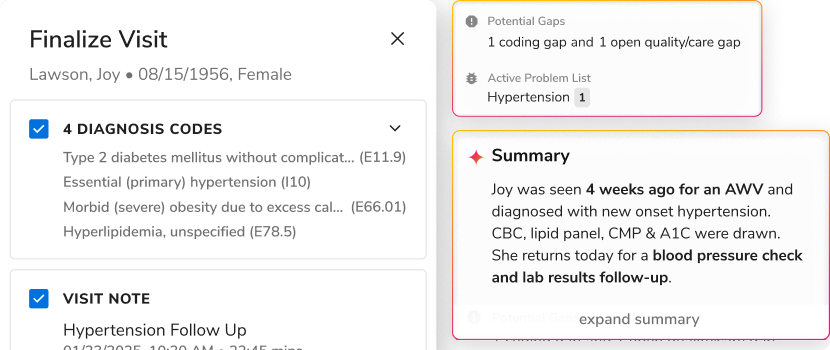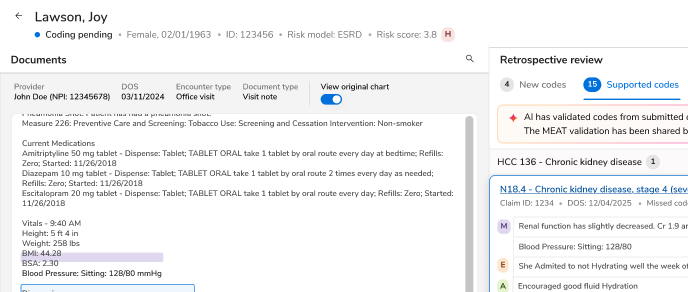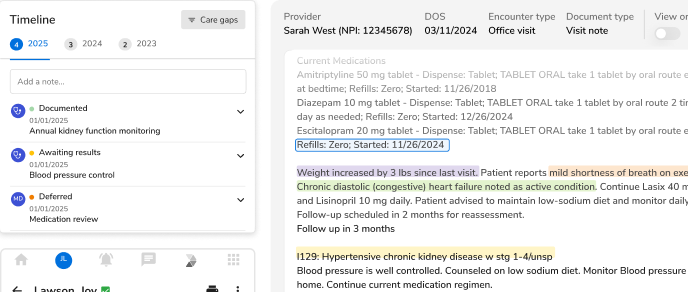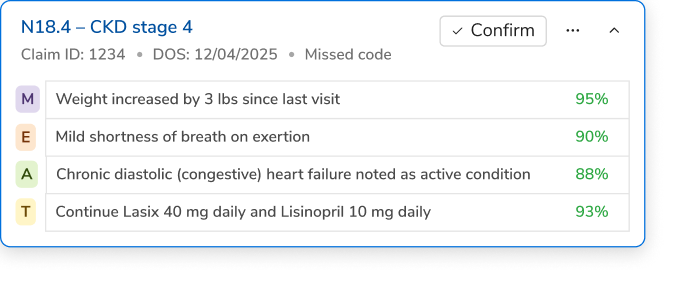The Enhanced Oncology Model (EOM): A Spotlight on Risk Management, Patient-Centric Care, and Health Equity

Cancer Statistics Society, a statistical division of the American Cancer Institute, estimated that there will be more than 1.9 million new cancer cases and more than 600,000 deaths due to cancer in the US, based on historical trends. That's a 31% mortality rate from new cases, and a horrific stat to ponder.
In 2016, the CMS launched its Oncology Care Model (OCM) as a five-year model in an effort to provide higher quality, more coordinated oncology care at the same or lower cost to Medicare. Since its launch, around 200 practices and 13 private health plans have participated in the model. OCM’s performance period ended in 2022, and after difference-in-difference (DID) analysis for all eight performance periods, CMS concluded:
- OCM reduced total episode payments by 1.7 percent.
- Care experience for OCM patients changed little during performance periods, as measured by six patient-reported composite measures of care experience and an overall rating of the cancer care team.
- OCM had no impact on chemotherapy payments, which were a larger component of spending and were a focus of the model.
- OCM led to cumulative net losses of $528M.
- OCM did not have consistent effects on health equity.
The COVID-19 pandemic reduced the expectations set for OCM, but what was learned from this model has set higher expectations for its successor: the Enhanced Oncology Model (EOM).
What EOM is and how it differs from OCM
EOM is also a five-year model, giving oncology organizations ample time to adapt, iterate, and earn incentives throughout the program’s lifetime. EOM builds on the structure and what was learned from the OCM, and adds an increased focus on managing provider risk, promoting patient-centric care, and addressing health disparities. There are also certain details that set EOM further apart from its predecessor.
OCM vs EOM Comparison Chart
How the two models stack up:
| OLD Oncology Care Model (OCM) | NEW Enhance Oncology Model (EOM) | |
| What are the different cancer types supported by each model? | OCM was supporting care for 21 cancer types. | EOM will include seven common high-risk cancer types for which OCM generated the majority of payment reductions. |
| What is the risk arrangement? |
|
|
| How is each model measuring the quality of care? | CMMI measured participants’ quality from practice-reported measures and claims sources reflecting care coordination, patient and care team experience, and clinical care. | Participants will need to report on patient experience, avoidable acute care utilization, management of symptoms of toxicity, management of psychosocial health, and management of end-of-life care. |
| What is the payment structure under each model? |
MEOS payment per patient: $160 + potential performance-based payments |
MEOS payment per patient: $70 + additional $30 payment for dual-eligible patients + potential performance-based payment or performance-based recoupment |
Source: https://innovation.cms.gov/innovation-models/enhancing-oncology-model
What practices need to do to prepare for EOM
EOM and OCM both assess oncology practices' ability to lower costs for six-month drug prescribing-initiated episodes while maintaining or improving the quality of resource utilization, patient experience, and clinical processes of care.
EOM aims to improve cancer care through a patient-centric approach via practice redesign activities, the use of quality measures to adjust payments, and incorporating health equity. It is cast from the same mold as OCM, so the majority of redesign activities remain the same, with two additional EOM-focused activities.
Participants must implement the following activities to align with EOM objectives:
- Provide beneficiaries with 24/7 access to a qualified clinician with real-time access to their medical records.
- Provide patient navigation and significantly enhanced communication with a focus on coordination of timely appointments, maintaining communications even outside the office between visits, medical records in the office at appointments, language interpreters/translators, linkages to numerous services and community resources, and access to clinical trials.
- Document a care plan with all the 13 key components of IMMP (Institute of Medicine Care Management Plan) and continually share the care plan with beneficiaries as part of ongoing shared decision-making at appointments.
- Adhere to all nationally recognized clinical guidelines.
- Use certified electronic health record (EHR) technology.
- Use data for quality improvement.
There are two additional activities targeted at further advancing the journey in value-based care in oncology. EOM participants will also be required to:
- Focus on patients' health-related social needs. Practices will need to:
- Establish a health equity plan.
- Collect beneficiary-level sociodemographic data and report it to CMS
- Use health-related social needs (HRSN) screening tools to correct HRSN data
- Provide patient navigation to EOM beneficiaries, such as connecting them to services and community resources
- Gradually implement **ePROs** (Electronic Patient-Reported Outcomes). EOM participants should also focus on the implementation of ePROs to accurately report on and measure both patient experience and clinical quality of care. In contrast, the earlier OCM primarily focused on outcomes collected from claims and practice-reported outcomes.
How Innovaccer can help you achieve EOM objectives and the best oncology care
Innovaccer's Population Health Management (PHM) suite empowers specialty practices to improve clinical and financial outcomes, no matter where they are on their value-based care journey. Powered by our award-winning Best in KLAS data & analytics platform, our PHM suite helps oncology practices meet EOM objectives by:
- Accessing longitudinal patient records Oncology practices can unify patient data from more than 80 EHRs and other IT sources to create a patient-centered view that helps deliver high-value, personalized, evidence-based care to cancer patients.
- Providing unparalleled insights at the point of care Our PHM suite brings advanced analytics to measure and track cost drivers, care metrics, and oncologist performance for targeted interventions.
- Simplifying risk-capture processes Our PHM suite offers actionable point-of-care insights to capture and address care and coding gaps to drive high-quality episodic and continued care.
- Driving seamless care coordination Oncology practices can use Innovaccer’s integrated, automated workflows to reduce administrative burden and costs, improving workforce effectiveness, efficiency, and resilience to burnout.
- Reporting data in standardized formats Our versatile reporting solution enables practices to report data to CMS on pre-defined or custom quality measures meeting compliances.
ONE MORE THING: EOM participants must report performance data to the CMS once during every performance period. If your oncology practice is participating in the EOM, we encourage you to book a demo with our healthcare experts to learn how Innovaccer’s PHM suite can help you achieve EOM objectives, and accelerate your success.

.png)





.png)









.svg)
.svg)

.svg)

